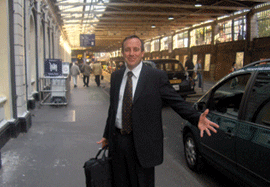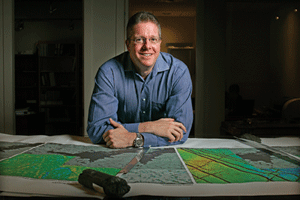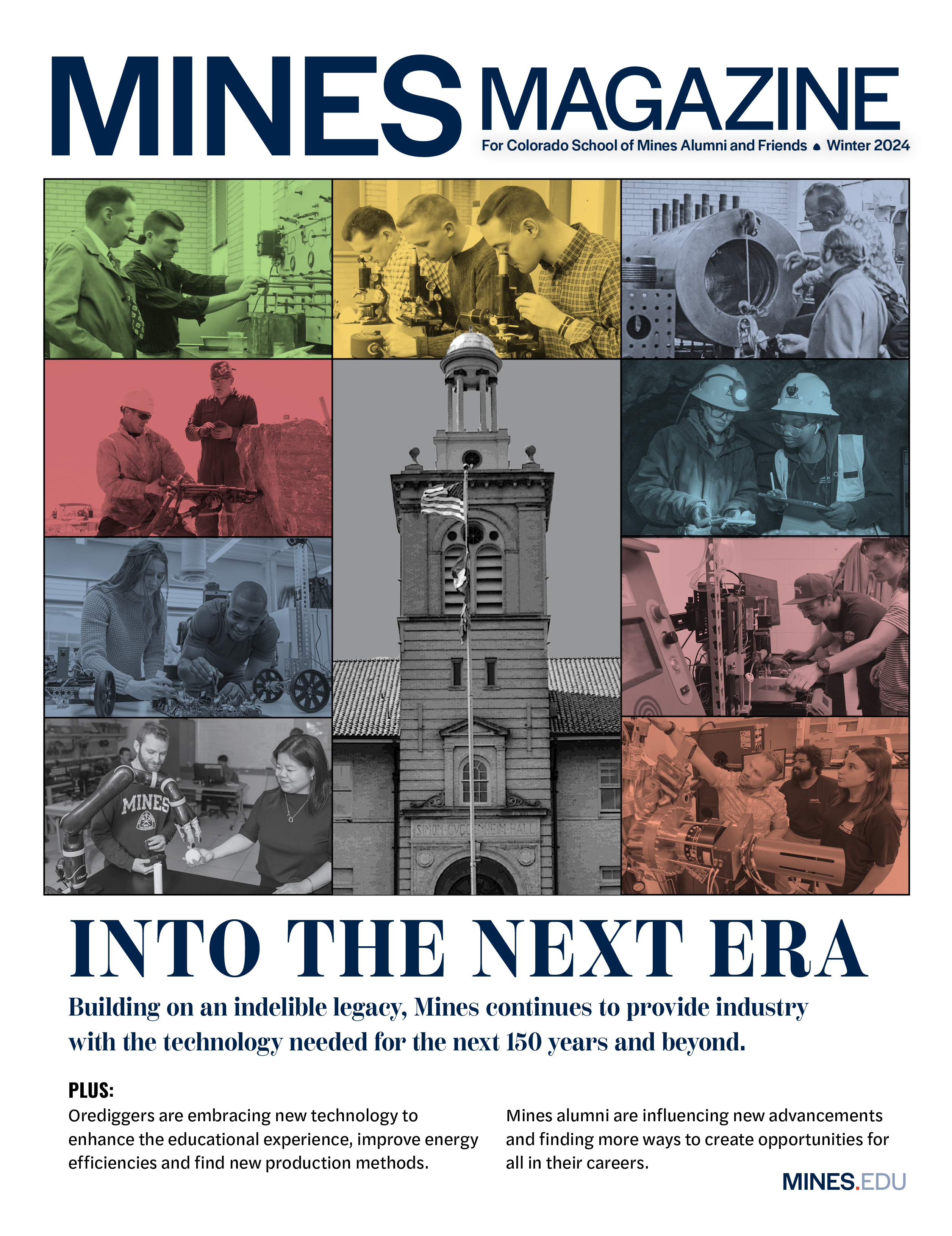 “Worldwide energy demand is expected to double in the next 20 years,” says Frank Gibbs ’84, PhD ’98, before asking, “Where will it come from?”
“Worldwide energy demand is expected to double in the next 20 years,” says Frank Gibbs ’84, PhD ’98, before asking, “Where will it come from?”
He believes the answer, at least in part, is nuclear power. And to help Mines play a significant role and establish itsNuclear Science and Engineering Program, he is contributing half his time and has taken on a transatlantic commute to his job with CH2M Hill at the Atomic Weapons Establishment in Aldermaston, UK.
Gibbs believes the demand for electricity, particularly of the carbon-free variety, is so high it can’t be met with any one technology alone. “People say we have to drill more, use clean coal, or develop renewables,” Gibbs says. “But the answer is everything. Nuclear has got to be part of the answer.”
A longtime nuclear engineer, Gibbs was supportive when discussions on starting a nuclear engineering program were revived several years ago. “Frank was one of the people who got the program up and running,” says Tom Boyd, dean of graduate studies.
Having helped launch the graduate-level program in 2007, Gibbs was officially given the title of research professor and director of the Nuclear Science and Engineering Research Center in July 2008. Though he has not yet collected a paycheck, he’s been cultivating industry support, research contracts and partnerships with federal laboratories. “He’s been fundamental in raising the profile of this program with industry sponsors,” Boyd says.
Gibbs began working in the nuclear industry 25 years ago when he graduated from Mines with a degree in metallurgy. His first job was working at Rocky Flats as a plutonium development engineer for the U.S. Trident weapons program. When the decision was made to close Rocky Flats, he joined the CH2M Hill team that managed to decommission the plant ahead of schedule and under budget. Along the way he earned his PhD in metallurgy at Mines, and spent a few years at Los Alamos National Laboratory in plutonium metallurgy research. He’s currently in his ninth year with CH2M Hill.
Gibbs acknowledges that public skepticism of nuclear energy is understandable. But, he emphasizes the industry’s safety record: “While the nuclear industry has been dormant for the last 25 years, over 100 operating reactors have quietly been generating approximately one-fifth of CH2M Hill power.” He goes on to explain that with all that has been learned during that time (at both CH2M Hill and abroad), combined with the updated designs and safety protocols that have been developed, the U.S. is well-prepared to enter a new era of building safe and robust reactors.
“The rest of the world gets this, and is going nuclear as fast as they can,” he says, mentioning France, which gets 75 percent of its power from nuclear energy. “We have one of the best universities in the world for this business,” he says, which is why he’s so enthusiastic about academia and supporting the program. “Mines has all the pieces for a comprehensive program covering the entire cycle of nuclear power generation,” from mining material to processing and converting it, generating power, and storing and reprocessing the fuel.
“Mines has been extremely good to me, and the basis for my livelihood,” he says. “I can give money and I do, but I also give my time.”
“For me, as it is with most Mines grads, it’s a lifelong partnership.”



